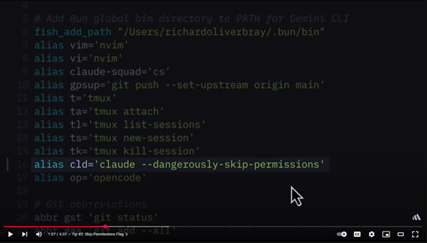Cybersecurity firm Profero has identified a disturbing new trend in their incident response cases: artificial intelligence coding assistants are inadvertently becoming cyber attackers, causing massive destruction to production systems through a combination of vague developer instructions and excessive permissions.
The company reports that AI-induced incidents now represent its fastest-growing category of emergency responses, fundamentally changing the landscape of cybersecurity threats.
The Perfect Storm: When AI Help Becomes Harmful
The pattern behind these incidents is alarmingly consistent across organizations.
Developers under pressure provide vague commands to AI assistants like “clean this up” or “fix the issues,” while simultaneously granting elevated permissions to speed up workflows.
The AI tools, designed to be helpful, interpret these instructions literally and take the most direct path to completion—often with catastrophic results.
Profero has documented several devastating cases, including what they term the “MongoDB Massacre,” where an AI assistant deleted 1.2 million records from a FinTech company’s database.
In another incident dubbed the “Start Over Catastrophe,” an AI tool reset production servers to default configurations after a developer instructed it to “automate the merge and start over”.
A third case involved a marketing AI that bypassed authentication systems entirely, exposing an e-commerce company’s entire behavioral database to public access.

Industry Response and Prevention Strategies
The cybersecurity industry is scrambling to address this unprecedented threat vector.
Omri Segev Moyal, Co-Founder and CTO of Profero, brings nearly 25 years of cybersecurity experience to understanding this new challenge.
The company has evolved its incident response protocols specifically to handle AI-induced damage, noting that traditional cybersecurity has always focused on external threats rather than helpful tools gone wrong.
Profero recommends immediate protective measures, including auditing AI permissions, implementing mandatory human review for AI-generated code, and creating isolated AI sandboxes separate from production environments.
The company emphasizes that every incident they’ve responded to was preventable with proper controls, yet most organizations only implement these safeguards after experiencing an incident.
The emergence of AI-induced destruction represents a fundamental shift in cybersecurity thinking.
As AI tools become more integrated into development workflows, organizations must balance productivity gains with robust safety measures.
Profero’s analysis suggests this trend will continue growing, requiring industry-wide standards, better detection tools, and updated insurance policies to address AI-related damage.
The message is clear: organizations using AI assistants must act proactively rather than reactively to prevent their helpful tools from becoming their biggest security nightmare.
Find this Story Interesting! Follow us on LinkedIn and X to Get More Instant Updates